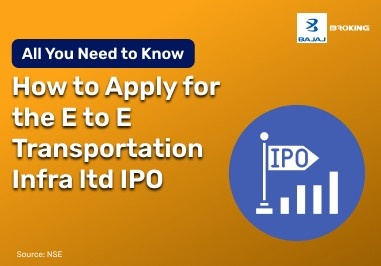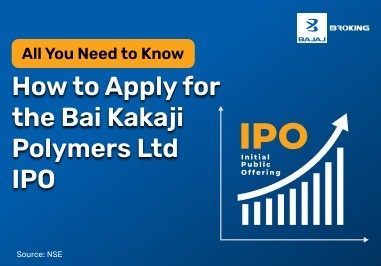Nifty includes the companies listed on the National Stock Exchange (NSE). There are various Nifty indices that track companies from different sectors. One of these is the GIFT Nifty and Nifty 50. These two indices are different, serving distinct purposes and featuring varying companies.
The Nifty 50 is the flagship equity index of the National Stock Exchange (NSE) and comprises 50 leading companies from various sectors in India. GIFT Nifty, on the other hand, is a set of derivative contracts based on the Nifty 50, traded on the NSE International Exchange (NSE IX) at GIFT City’s International Financial Services Centre (IFSC). Both indices indicate broader market access and benchmarking.
In this guide, we will discuss Gift Nifty Vs Nifty 50 and their meanings. Read on for a comprehensive understanding of these two indices.
What is GIFT Nifty?
GIFT Nifty consists of a series of US dollar-denominated derivative contracts based on the Nifty 50 Index, which are being traded on the NSE International Exchange (NSE IX) at GIFT City in Gujarat, India's International Financial Services Centre (IFSC). It was launched as a substitute for SGX Nifty following its migration from the Singapore Exchange. The basic idea behind GIFT Nifty is to provide international investors and institutions with long-term exposure to Indian equity markets.
The products traded under GIFT Nifty are GIFT, Nifty 50, GIFT Nifty Bank, GIFT Nifty Financial Services, and GIFT Nifty IT. These products have the same methodology as their NSE equivalents and are derived from the free-float market capitalisation-weighted index. GIFT Nifty has two trading sessions, spanning close to 21 hours every day, enabling wider participation in global time zones.
The move aligns with India's vision to transform GIFT City into an international financial hub by offering a regulated, tax-advantaged platform for offshore financial services and capital markets activities.
Additional Read: What is Gift Nifty
What is the Nifty 50?
According to the NSE, the Nifty 50 is a benchmark stock market index that represents the weighted average of 50 of the largest and most frequently traded Indian companies listed on the National Stock Exchange (NSE). Introduced in April 1996 by NSE Indices Limited (formerly India Index Services and Products Limited), it serves as a barometer of India's equity market performance.
It tracks 13 industries of the Indian economy, such as financials, information technology, oil, and consumer discretionary, and is weighted based on free-float market capitalisation. Stocks in the Nifty 50 are selected based on liquidity, trading frequency, market capitalisation, and listing history. It is widely used by mutual funds, exchange-traded funds (ETFs), and other investment instruments for benchmarking and passive investing.
Dealing in Nifty 50-linked derivatives, i.e., futures and options, is conducted during normal NSE trading hours: 9:15 AM to 3:30 PM IST. Nifty 50 is also a significant barometer of investor sentiment and macroeconomic trends in India's financial markets.
Source: NSE
Differences Between GIFT Nifty and Nifty 50
GIFT Nifty and Nifty 50 are both benchmarks for tracking the performance of Indian equities, but they differ significantly in structure, trading environment, and global access. GIFT Nifty is the derivative version of the Nifty index traded at the GIFT City’s International Financial Services Centre (IFSC) in Gujarat. It primarily caters to international investors, providing access to Indian markets outside local hours.
On the other hand, Nifty 50 is the primary equity index on the National Stock Exchange (NSE), representing the top 50 Indian companies by market capitalisation. It is widely tracked by domestic investors and used as a benchmark for mutual funds and ETFs. While Nifty 50 drives local market sentiments, GIFT Nifty facilitates global market participation, enabling broader time-zone coverage and offshore risk management.
Despite their similar underlying composition, the operational and strategic roles of these indices are quite distinct in the Indian and international financial markets.
Here are the striking differences between GIFT Nifty and Nifty 50:
Aspect
| Details
|
Index Type
| GIFT Nifty is a derivative product traded on NSE IFSC in GIFT City, while Nifty 50 is a benchmark equity index of the NSE in India.
|
Target Investors
| GIFT Nifty is designed for international investors and institutions, while Nifty 50 caters to both domestic and international retail and institutional investors.
|
Market Location
| GIFT Nifty is traded in GIFT City, Gujarat (IFSC); Nifty 50 is traded on the NSE, headquartered in Mumbai.
|
Source: NSE
Trading Hours Comparison
The trading hours for GIFT Nifty and Nifty 50 differ significantly, reflecting their target markets and operational structures. GIFT Nifty operates nearly 21 hours a day in two sessions, making it highly accessible for global investors across time zones. It runs from 6:30 AM to 3:40 PM IST and then again from 4:35 PM to 2:45 AM IST the following day.
This extended window helps overseas participants manage risk and hedge positions effectively. In contrast, Nifty 50 follows regular Indian market hours, operating from 9:15 AM to 3:30 PM IST. This single-session window aligns with domestic investor activity and SEBI regulations.
The longer trading window of the GIFT Nifty facilitates global hedging opportunities and allows for price discovery across various global events, while the Nifty 50 remains aligned with the Indian regulatory and economic cycle. These differences cater to the unique needs of domestic versus international participants.
Index
| Trading Hours
|
GIFT Nifty
| Two sessions: 6:30 AM – 3:40 PM IST (Session 1), 4:35 PM – 2:45 AM IST (Session 2)
|
Nifty 50
| One session: 9:15 AM – 3:30 PM IST (Regular NSE trading hours)
|
Source: NSE
Conclusion
GIFT Nifty and Nifty 50 have different but complementary functions in India's financial system. Whereas Nifty 50 captures the performance of leading Indian companies within domestic trading hours, GIFT Nifty opens up market access for international investors through virtually round-the-clock trading. This transition reinforces India's financial integration with the world and consolidates GIFT City's role as an international financial hub.
Both facilitate wider participation, greater liquidity, and more effective price discovery across time zones, catering to the changing demands of international and domestic market participants.














